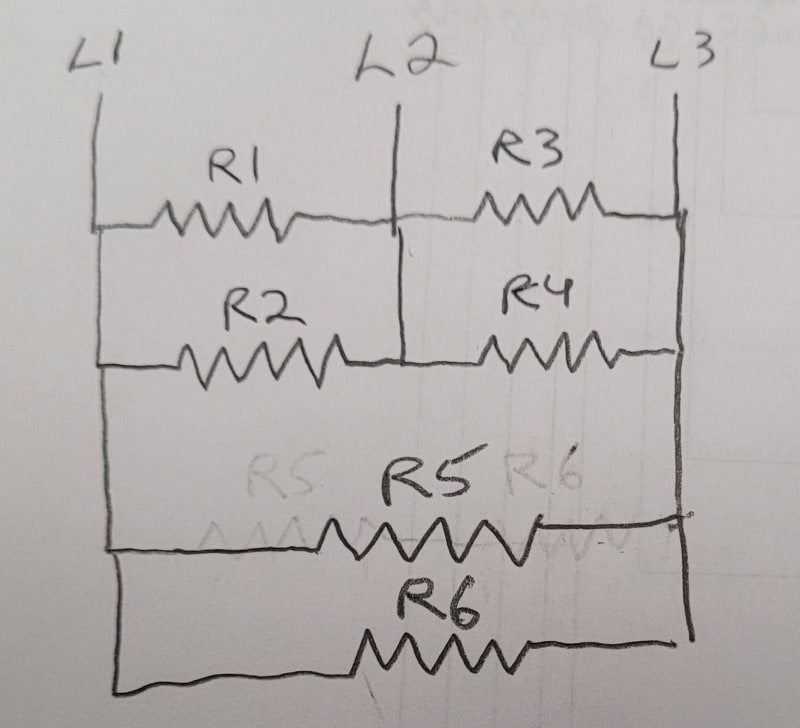PaulKraemer
Electrical
- Jan 13, 2012
- 155
Hi,
I have a tank that is used to melt glue. It has six heaters, each with a resistance of 10 ohms. It is powered with 208 VAC three phase.
Originally, it was wired as shown below with two heaters in parallel across each possible pair of lines (L1-L2, L2-L3, and L1-L3)...

... with this wiring, I had a resistance of 5 ohms across each pair of lines. With this being the case, I used ohms law to calculate the expected current between L1 and L2 (through heaters R1 and R2 wired in parallel) as 41.6 amps. Then I calculated the expected current between L1 and L3 (through heaters R5 and R6 wired in parallel) as 41.6 amps as well. I'd like to determine the expected total current through L1. Being the current through L1-L2 is not in phase with the current through L1-L3, I don't think it is correct to simply add 41.6 + 41.6 = 83.2.
If anyone here can tell me the correct way to calculate the expected current through L1 (and through L2 and L3 for that matter), I would greatly appreciate it.
Thanks and best regards,
Paul
I have a tank that is used to melt glue. It has six heaters, each with a resistance of 10 ohms. It is powered with 208 VAC three phase.
Originally, it was wired as shown below with two heaters in parallel across each possible pair of lines (L1-L2, L2-L3, and L1-L3)...

... with this wiring, I had a resistance of 5 ohms across each pair of lines. With this being the case, I used ohms law to calculate the expected current between L1 and L2 (through heaters R1 and R2 wired in parallel) as 41.6 amps. Then I calculated the expected current between L1 and L3 (through heaters R5 and R6 wired in parallel) as 41.6 amps as well. I'd like to determine the expected total current through L1. Being the current through L1-L2 is not in phase with the current through L1-L3, I don't think it is correct to simply add 41.6 + 41.6 = 83.2.
If anyone here can tell me the correct way to calculate the expected current through L1 (and through L2 and L3 for that matter), I would greatly appreciate it.
Thanks and best regards,
Paul
